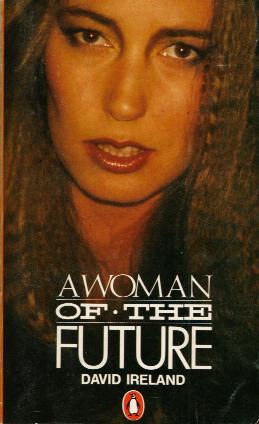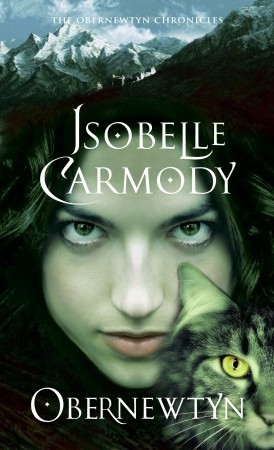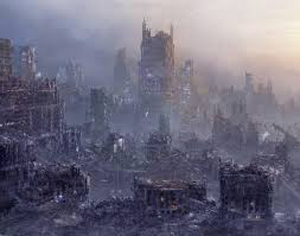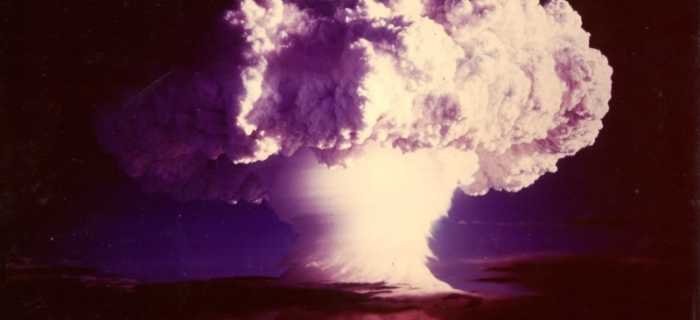David Ireland’s A Woman of the Future and Isobelle Carmody’s Obernewtyn : Abjection and Mutation

This article looks at two texts, David Ireland’s A Woman of the Future and Isobelle Carmody’s Obernewtyn, using the framework of Julia Kristeva’s theory of abjection, as explained principally in her work Powers of Horror, and variations on aspects of this theory as suggested by various critics. Both primary texts are situated in dystopian futures where many people acquire mutations which result in their exclusion from society. These mutants are treated with fear and suspicion by most of the unaffected populations. The result is often physical punishment, or exclusion from the full socio-economic, legal and cultural benefits of society.

The relevance of Kristeva’s theory to these texts applies to four areas. Kristeva’s ideas of the connection between abjection, defilement, and dirt out-of-place, and how it disturbs identity and order are the first. This leads into a discussion of the use of abjection as a tool for control in the societies portrayed in the primary texts. Following this, there will be a demonstration of how the language of abjection can be seen also as the language of mutation, as both describe an overflowing of mental and/or physical boundaries. Finally, there is Kristeva’s proposition that abjection not only disturbs identity, but in many ways fundamentally destroys it, and argue that it may destroy one identity only for a new one to take its place.
Julia Kristeva
Kristeva’s theory of abjection was influenced by the earlier work of anthropologist Mary Douglas, whose 1969 work Purity and Danger introduced her to the concept of ‘defilement’. Douglas’s work is also applicable to mutation, as she writes about the centre (mainstream society, in the case of the two primary texts) being persecuted by ‘hybrids’, ‘confusions’ and ‘monsters’ who ‘confound the general scheme of the world.’1 The inside, the mainstream population who want order, are constantly threatened by what they perceive, or have been taught to perceive, as a hostile outside. This is where the importance of ‘defilement’ becomes clear, as Douglas writes that ‘dirt is essentially disorder…Dirt offends against order.’2 This may mean physical dirt, but Douglas also gives it the meaning of ‘matter out-of-place’, the by-product of an existing systematic ordering and classification of matter.3 The impure, or abject, is that which is regarded as deviating from an essential original state of homogeneity. As the natural world is constantly shapeshifting and unpredictable, and therefore abject, mutants could be seen as matter out of place, as they do not fit within an everyday ordering or classification system. If Kristeva’s ‘abjection’ must be controlled by maintaining physical integrity of the body, as suggested by Frances Pheasant-Kelly, mutation narratives must be abject.

Dirt and defilement
Douglas’s notion of ‘defilement’ assigns in turn different statuses to the human body. It may be the ultimate in socioeconomic causality, and for those in society who feel threatened by this, strict ‘adherence to Prohibition and Law’4 becomes necessary to preserve the social order. The abject is a breakdown of otherness and sense,and thus threatens the social structure, and becomes a tool for social control.
In both texts, there are social systems in place to identify and exclude mutants. A Woman of the Future tells of a future Australia where what used to be known as the working class has been renamed the Free; as in, free to do anything they wish, except meaningful work. They are fully supported by the taxation system. The Serving Class performs meaningful work. The filtering of people into one of the two social classes happens in two ways: at the end of secondary schooling pupils are subject to rigorous academic testing, the results of which send ‘a small stream of young people toward the class of professionals…’5 The other form of classification is mutation. Mutation usually develops in childhood, automatically precluding these children from progressing to the Serving Class, and who ‘…see the divisions of society…their own failure … and aberrations blossom.’6 If it occurs to members of the Serving Class in adulthood, they lose their position and are demoted to the Free class. Mutation brings with it far more severe consequences to professionals than almost anything they could deliberately do. Mister Jonson, narrator Alethea’s science teacher, experiences no consequences for getting a schoolgirl pregnant. He loses his job, permanently, when ‘he began to come out into the world…’, when his internal organs become ‘tired of the darkness inside his body cavities and took it on themselves to come out into the light.’7
The law-makers in Obernewtyn are faced with more complex issues in identifying mutants, for they are not always physically obvious. In the aftermath of the nuclear holocaust known as the Great White, the governing Council ‘decreed any man or beast not born completely normal, must be burned.’8 In time, it becomes clear ‘that not all mutancies were immediately apparent at birth. Those afflictions as those which attacked the mind could not be discerned until later.’9 Abjection can be used as a tool to handle marginalised groups, to keep them in their place. Societies at threat cease to be hospitable places, for being hospitable requires us to be as the other. Mainstream society becomes hostile towards others. Protecting the body politic by excising threats ‘establishes a logical connection between the making live and letting die’ by means of ‘expelling or excising that which is unhealthy.’10
Kristeva, influenced by Mary Douglas, writes of abjection as originating in fears of uncleanliness; sometimes of actual physical secretions such as menstrual blood, but also ‘what disturbs identity, system, order. What does not respect bodies, positions, rules.’11 Mutation disturbs the natural order whether it is caused by abnormal cell growth, nuclear radiation, or the unknown machinations of a fantasy world, and thus we can use the language of abjection as the language of mutation. We fear genetic experimentation because we fear it may threaten our own humanity. ‘We fear the Beast Without who figures forth the Beast Within.’12 A mutant may seem somewhat familiar but at the same time different, a ‘something’ unrecognised, ‘… radically separate, loathsome. Not me. Not that. But not nothing, either.’13 The abject causes an instinctive reaction of ‘fear – a fluid haze, an elusive clamminess…’14 and abjection is present in the ‘human animal that has been highly altered.’15 Kristeva further suggests relationships between abjection and mutation in referring to the confrontation of the abject ‘with those fragile states where man strays onto the territories of animal’16.
Some of the physical mutations in A Woman of the Future blur the boundaries between human and beast, such as when Alethea turns into a leopard at the end of the book. However, ‘The thing that is in me changing me from the inside makes me weep, and the tears are black. But they are not abject: ferocious, rather..’17 Alethea writes that she does not feel abjected by her mutation, but it is assumed that others will, as other mutants in the book are regarded as abject. Kristeva suggests that one can feel abjection as a reaction to the matter of one’s own body being out-of-place. As Alethea does not feel abject herself, she may not feel her developing leopardness as her own matter being out-of-place. Claire B. May suggests that we can reconcile ourselves to the abject if we acknowledge it within ourselves. Alethea clearly does so, as quoted above.

Elspeth, the narrator in Obernewtyn, likewise becomes more at ease with her mental mutations as she gains knowledge of others like her, and she realises that what she has always assumed as impossible is actually possible; that she is not alone, that ‘Not only were there others like me, but there were people who had different sorts of abilities. Surely that would mean we were not isolated Misfits.’18 The remote settlement of Obernewtyn is wrested from the hands of those who would harm them, to be run in the future as a sanctuary. Matthew, another mutant and Elspeth’s first friend at Obernewtyn, says of Rushton (once the overseer, by the end of the book the acknowledged heir and master of Obernewtyn), ‘Nearly all the Misfits want to stay. He’s going to make Obernewtyn a secret refuge for people like us.’19
Social reactions to mutations
Social reactions to mutants in the two primary texts are driven by disgust, fear, mistrust and a revulsion against the abnormal. Kristeva’s theory of abjection can explain these emotional responses. She writes that abjection leads to ‘…violent, dark revolts of being, directed against a threat that seems to emanate from an exorbitant outside or inside….’20 The notion of abjection in relation to interiority and exteriority can be applied equally to mutations of both body and mind. The mutants of A Woman of the Future have exorbitant external manifestations, such as the man who grows wheat stalks out of various parts of his body, which contain ripening seed of an ancient variety which are harvested to be kept on file in the genetic bank.
The mutants of Obernewtyn have exorbitant internal powers such as the ability to foretell the future in dreams. Ireland and Carmody create worlds in which the majority feel threatened by the abnormal, the overflowing of physical and metal boundaries; Kristeva describes abjection as ‘…an alchemy that transforms death drive into the start of life, of new significance.’21 Although the mutants in both texts are rejected as abject, their mutations are also the start of new life in various ways; be it the realisation of being able to communicate in new ways with telepathy, or the production of ancient crop forms. Their experiences of transforming their human substance into something new and original, with varying degrees of personal enrichment and satisfaction, is a form of alchemy.
This overflowing of mental and physical boundaries accords with Kristeva’s reading of Mary Douglas’s notion of defilement, in which ‘filth is not a quality, but it applies only to what relates to a boundary and, more particularly, represents the object jettisoned out of that boundary, its other side, a margin.’22 The mutations described in the texts are considered abject by those who govern the mutants’ communities. The mutants are therefore propelled over the boundary of mainstream society. Marcia England suggests that abjection is most likely when spatial boundaries are questioned, dissolved or transgressed; the dystopian societies described in both texts eject mutants either from physical boundaries (killing or exiling them), or socio-economic and cultural boundaries (being barred from professional employment).
Abject bodies elide boundaries and disturb categories, and are punished by those in power. That which appears monstrous organises structures of difference into same/other binaries, which are seen in operation throughout Obernewtyn and A Woman of the Future. Alethea (prior to her mutation a member of a professional family anticipated to have a glittering academic career) regularly crosses boundaries without any apparent immediate consequences. At various points in her deliberately fragmented narrative, assembled from scraps of writing left behind when she ran into the bush upon turning into a leopard, she displays herself as pure/impure, virginal/promiscuous, clean/unclean. Sexually precocious, she submits mainly to the demands of boys she is at school with; however, the only time she gains genuine enjoyment appears to be with a ‘filthy man’ in a sports changing room, who she finds ‘fascinatingly dirty, so filthy that he was lovely.’23 In this scene she is drawn to the abject, to dirt out-of-place.
Uncleanliness and mutations
Alethea is drawn to physical dirt, and Kristeva does write about abjection as it is inherent in bodily secretions such as menstrual blood, and in the body of a corpse. However, Kristeva treats such ‘corporeal waste, menstrual blood and excrement’ as representing, ‘like a metaphor that would become incarnate – the objective frailty of the symbolic order.’24 Other critics writing on abjection have applied Kristeva’s metaphorical theory to more visceral material, and to the language of mutation. Kristeva herself references a state which could apply to mutation when she writes of ‘The heterogeneous flow which portions the abject and sends back abjection, already dwells in a human animal that has been highly altered.’25 We all live with the certain knowledge of death, and Kristeva refers to the abject as living ‘at the behest of death – an operator in genetic experimentation.’26 The likely causes of mutation in Obernewtyn lie in the nuclear holocaust, the Great White, which took place approximately a century prior to the start of the book.

In A Woman of the Future, however, there is no clear explanation of the mutations, nor an idea of the timeframe in which they have occurred. Alethea leaves a list of potential causes in her bundle of notes, gleaned from knowledge acquired at school and from hearing adults talk. These include ‘The body’s interaction with the eco-system’ and ‘Genetic manipulation by the professional class’, but also more metaphysical suggestions such as ‘People treated as objects becoming objects’ and ‘Ineffective social adjustment.’27 This distillation of social views flows from the ‘abnatural’ encounters of people with mutations as extreme as that of the newsagent from whose torso a genuine wooden coffin grows, slowly. For a long time, he files it down to keep it level with his skin, to avoid notice, but eventually becomes tired of hurting himself in the process, and allows it to grow its way out, where it proves to be a perfectly normal coffin, correct in every detail. This is a lengthy process which requires him to remain largely immobilised with the growth resting on a chair because the weight becomes too painful for him to otherwise withstand. ‘An observer from a strange place might have noticed that these growths and changes, though they provoked some interest, produced no wonder.’ 28
Jesse Oak Taylor writes of ‘the abnatural encounter, in which characters are forced to acknowledge the empirical reality of phenomena that cannot be explained without redefining the laws of nature or simply discarding them altogether’29, which could explain the variety of suggestions Alethea has absorbed from her social interactions about the potential causes of mutation. Disturbing anomalies threaten the human perceiver and their concepts of reality, and lead to fears that the world is unstable; in the future version of Australian society portrayed by David Ireland, apparent acceptance of the new socio-economic order and of the prevalence of grotesque physical mutations, as indicated in Alethea’s list, mask a deeper fear of an unstable world order.
‘Noise’ in complex systems
Christine Ross writes about ‘noise’ in complex systems, which she equates with abjection, and I suggest that ‘noise’ could equally translate to ‘mutation’. ‘Noise’ is a ‘distortion in the transmission of messages or a catastrophe within the environment’. When that system has adapted to be able to recognise ‘noise’ and use it as an element of self-organisation, it is no longer an ‘error’, and therefore ‘What is noise then, if it is not a form of abjection…’30 Taylor writes similarly about pollution. ‘Understood in systemic terms, pollution can be thought of as the disruptions, irritation, or noise that intrudes on the system from outside, introducing novelty and adaptation within it.’31 He suggests that Kristeva’s theory of abjection ‘can be understood as a … psychological process, by which the mind denaturalizes those elements that threaten its cohesion, or the bodily encounter with the substances that pass beyond it. Abjection is the body’s reaction to its matter out-of-place.’32 Mutation is matter out-of-place. In the physical world, ‘…the vast majority of mutations are not adaptations, in that they do not enable a better fit between the organism and its ecological niche but rather have quite the opposite effect…The operative principle of selection in evolution is death unto extinction.’33
In Obernewtyn, science has been declared dangerous and defunct, because it led to the Great White. Evolution is no longer taught, and Beforetime books are banned. In Elspeth’s early childhood however, her parents owned Beforetime books and read some of them to her (before they were burnt as Seditioners), including one about evolution. In a telepathic conversation with the cat Maruman, she tells him about this book, and that humans were supposedly descended from apes. Apes did not survive the Great White, and neither she nor Maruman are able to believe that evolution could be any ‘more than a fairy tale.’34 The mutations are undeniable, however, and cannot be explained as fairy tales as they are encountered in everyday life. As seen above, initial mutations after the Great White were physical and assumed to have been caused by nuclear radiation. These are obviously not mutations caused by evolution.
The mental mutations, however, are not specifically explained away in the same way. The Herder Faction (an emerging religious sect appointed by the Council to supervise and administer ritual burnings of mutants and Seditioners) informed the Council about the mental mutations, as mentioned before. However, it becomes apparent as the story develops that these mutations may not be the result of the Great White at all. Maruman tells Elspeth that animals had been able to communicate telepathically ‘in a limited form even before the holocaust…’35 although he does not elaborate on whether they could communicate with humans. The use of the word ‘limited’, however, does suggest that these abilities have increased since the Great White. It remains unclear whether similar powers existed among humans in the Beforetime, although Matthew’s story hints at a genetic cause for them. When he first makes telepathic contact with Elspeth at Obernewtyn, he tells her that his mother had similar abilities, but that until he had been exiled there he had thought that they were the only two, as he had never met any others. He himself had been denounced as a Misfit shortly after he was orphaned. Living alone in his fishing shack, he had acquired a reputation for eccentricity and aloofness. A gang of village bullies tormented him, and in time the ringleaders suffered accidents. ‘One fell from a roof and another ate poisoned fish. The village called in the Council and claimed Matthew was dangerous. No one could explain how Matthew, with his lame foot, had hurt the boys but somehow the Council was convinced and he was declared Misfit.’36
By the end of Obernewtyn we are left in no doubt of the usefulness of the Misfits’ Talents. They can organise to overthrow their cruel masters and mistress; when it seems as if they have been trapped and overcome, Rushton forms a telepathic link with Elspeth to keep them both alive, and, ultimately, she discovers a hitherto unsuspected power, which saves their lives. ‘Something inside my head crackled violently, a power stirred in me completely unlike any other ability I possessed…The wild surge of power rose from the deepest void of my mind and I felt a sense of exultation at the knowledge I could control it.’37

Abjection and identity
As noted above, Kristeva writes that abjection disturbs identity. Tina Chanter suggests that if one feels ‘I am abjected, therefore I exist, and I have a place in the world’38 that this gives a sense of identity to the person who accepts and understands their own abjection. Kristeva claims that abjection starts with the birth process, when the baby is shed from the mother’s body, and does not stop there but never ceases to haunt the borders of identity. Eric White suggests, however, that as birth is always the first step in becoming an individual, this would also be the first step in gaining an identity. If we consider abjection as a tool of socio-economic and cultural control, we can suggest that those who expel the abject keep up their own sense of self-worth and identity at the expense of the abject. Pheasant-Kelly writes that when abjection is used in this way to control populations it encourages the development and maintenance of a coherent social identity.
I think it can be said that more than one coherent social identity can come out of this; one for the majority population, but also a sense of identity for the abjected and expelled, by virtue of their very abjection. Is one more oneself if one is other? The boundaries between selving and othering may not be rigidly fixed. If we think of the framework of identity in terms of ‘partiality and patterns of flow’, the potential for abjected forms could lie in their boundaries.39 There could exist a ‘third space’ of citizenship in which the abject can live in between existing social frameworks, allowing them to inhabit a realm of lived practices and gain, or regain, an identity. The two primary texts covered in this article offer examples of abjection both disturbing and strengthening identity.
Obernewtyn demonstrates the use of abjection as a strict weapon of social control, depriving the abject subjects of their agency and therefore making them inoperative within their own society. In the immediate aftermath of the Great White, traumatised and seriously ill survivors fled the affected areas, arriving as refugees in what is only known as the Land by the time of the narrative. The surviving area is remote, home to farmers and unsophisticated rural dwellers, who are terrified by the calamitous events and fight the refugees to preserve their own way of life. Initial reactions to mutations were driven by fear of contagion. Over time, a Council was established to maintain law and order, who decided to banish all signs of the previous civilisation to preserve their population from what they perceived as the dangers of technology and scientific knowledge. The religious order mentioned above, the Herders (a reminder of the agricultural nature of the surviving population), was established to eject the abjected mutants from society.
Strict social controls of this sort enabled the Council and the Herders to maintain the fiction that the survivors had been spared by God (or Lud, as he – emphatically male – is known in this post-holocaust society, and an obvious reference to technophobe British apprentices during the Industrial Revolution). This strong social identity is reinforced over time as law and religious dogma became the same thing, and ‘the honest way of the farmer’ is seen as the only true path.40 Fear of death or banishment keeps a strong hold over society. However, by the end of Obernewtyn, Elspeth and the other Misfits have developed an equally strong identity as a group, which would have been unlikely to have come about without their first abjection from mainstream society. The text (the first in a series of seven which greatly expands upon the subject, but increasingly reinforces the sense of special identity felt by the Misfits), ends with Rushton discussing plans to form a Council of their own to govern Obernewtyn. This Council, unlike the one which dominates the Land, will be democratically elected and enable everyone to use and improve their Talents, train newcomers, and form guilds according to abilities. It will be a model democratic collective society where no-one is further abjected.
The mutants in A Woman of the Future gain less of a sense of identity from their experience of abjection than do those in Obernewtyn. Alethea suggests that the Free Citizens see their own failure (that of not having made it through the grading exam), and that this seeing ‘begins to interact with the seen, the eye with the object; aberrations blossom.’41 With no need to work, they have room for creativity – but this often takes place deep within their own cells. However, as we have seen earlier, she has absorbed a great many ideas about why mutations occur, and this is no more likely to be the truth than anything else she writes. The fact that the Frees are a socially, economically, culturally and legally designated group, whether because of their mutations, lack of intellectual prowess, or both, gives them a designated identity. They are fully supported by the State, not required to work, and ‘Now the stigma of having no profession is officially abolished, abject poverty done away with,’42 they are able to live in relative comfort.
However, throughout the text there are brief references made to unhappy groups of Frees, demonstrating against the system. When Alethea’s father is called home to meet his newborn daughter, he finds himself confronted by ‘A demonstration of grotesquely changed women’ who take umbrage at his broad smile, knock him down and beat him up.43He tells Alethea in later life that he considered ‘that the silent majority is better quiet; when they talk their voice is the voice of children…’, by which he means pathetic, spiteful and ignorant.44 This undercurrent of dissatisfaction and barely concealed hostility from the mutants is also seen in the episode of book-burning that Alethea and her father witness at a shopping centre. A motley crew of ‘surfers, shoppers, secretaries, onlookers, librarians, failed motorists, cripples selling cheap pens, mothers, tourists, trippers, travellers attracted by the violence, came and bashed the books.’ Alethea further describes them as the failures and grotesques of our society’, including ‘Changelings’.45 These mutants do not seem to have gained the sense of belonging that Elspeth and her fellow Misfits have reached by the end of Obernewtyn.
These primary texts depict fictional dystopian futures in which mutant citizens are excluded from their societies in several ways. They are treated with misunderstanding, fear and sometimes pity by others they encounter. The result is sometimes execution, or more commonly exclusion from the full benefits of citizenship and self-actualisation. Kristeva’s theory has been applied to these texts in four areas: how abjection disturbs identity and order; how it can be a tool for political, cultural and socio-economic control; and how the language of abjection can also be the language of mutation, as both show an overflowing of mental and/or physical boundaries. Finally, Kristeva’s proposition that abjection both disturbs identity and destroys it, has itself been disturbed with the suggestion that it may destroy one identity only for a new one to take its place.
Works Cited
[1] Mary Douglas. Purity and Danger. London: Routledge and Kegan Paul, 1969.
[2] Ibid. 55.
[3] Ibid. 2.
[4] Ibid. 36.
[5]David Ireland. A Woman of the Future. Ringwood, Victoria: Penguin Books, 1980. 12-3.
[6] Ibid.
[7] Ibid, 259.
[8] Isobelle Carmody. Obernewtyn. Ringwood, Victoria: Penguin Books, 1987. n.p.
[9] Ibid.
[10] Sherryl Vint. “Introduction: Science Fiction and Biopolitics.” Science Fiction Film and Television 4, no. 2 (Autumn 2011): 162.
[11] Julia Kristeva. “Powers of Horror (Abridged).” In The Portable Kristeva, edited by Oliver, Kelly, translated by Roudiez, Leon. 229–63. New York: Columbia University Press, 2002. 232.
[12] Fay J. Ringel. “Genetic Experimentation: Mad Scientists and The Beast.” Journal of the Fantastical in the Arts 2, no. 1 (Spring 1989): 64–75. 74.
[13] Kristeva, 230.
[14] Ibid, 233.
[15] Ibid, 237.
[16] Ibid, 239.
[17] Ireland, 346.
[18] Carmody, 94-5.
[19] Ibid, 240.
[20] Kristeva, 299.
[21] Ibid, 241.
[22] Ibid.
[23] Ireland, 304.
[24] Kristeva, 259.
[25] Ibid, 237.
[26] Ibid, 241.
[27] Ireland, 49.
[28] Ibid, 34.
[29] Istvan Csicsery Jr. “On the Grotesque in Science Fiction.” Science Fiction Studies 29, no. 1 (March 2003): 71–99. 80.
[30] Christine Ross. “Redefinitions of Abjection in Contemporary Performances of the Human Body.” RES: Anthropology and Aesthetics 31, no. The Abject (Spring 1997): 154.
[31] Jesse Oak Taylor. “Being Impure: Robert Louis Stevenson’s Strange Case of Dr. Jekyll and Mr. Hyde and the Polluted Body.” In The Sky of Our Manufacture: The London Fog in British Fiction from Dickens to Woolf, 99–121. Charlottesville: University of Virginia Press, 2016. 116.
[32] Ibid, 117.
[33] Ibid, 116.
[34] Carmody, 34.
[35] Ibid.
[36] Ibid, 92.
[37] Ibid, 237.
[38] Tina Chanter. “Abjection and Ambiguity: Simone de Beauvoir’s Legacy.” The Journal of Speculative Philosophy, New Series 14, no. 2, The Work of Simone de Beauvoir (2002): 145.
[39] William Desmond. “The Aesthetics of the Intimate Universal.” In The Intimate Universal: The Hidden Porosity Among Religion, Art, Philosophy, and Politics, 251–303. New York: Columbia University Press, 2016. 260-2.
[40] Carmody, n.p.
[41] Ireland, 13.
[42] Ibid, 35.
[43] Ibid, 13.
[44] Ibid, 14-5.
[45] Ibid. 338-9.
What do you think? Leave a comment.











Two writers I knew nothing about until I read this essay. Interesting reference to using abjection to marginalize minority groups.
I do so love Carmody and Obernewtyn is a great text, but I think you would have had a more cohesive discussion if you used Kristeva’s concept through an exploration of a number of Carmody’s texts as this is quite a common theme for her and the use of mutation as a form of disruption to identity is indeed present. Thanks for sharing.
Is this the article with less comments here? WHY?